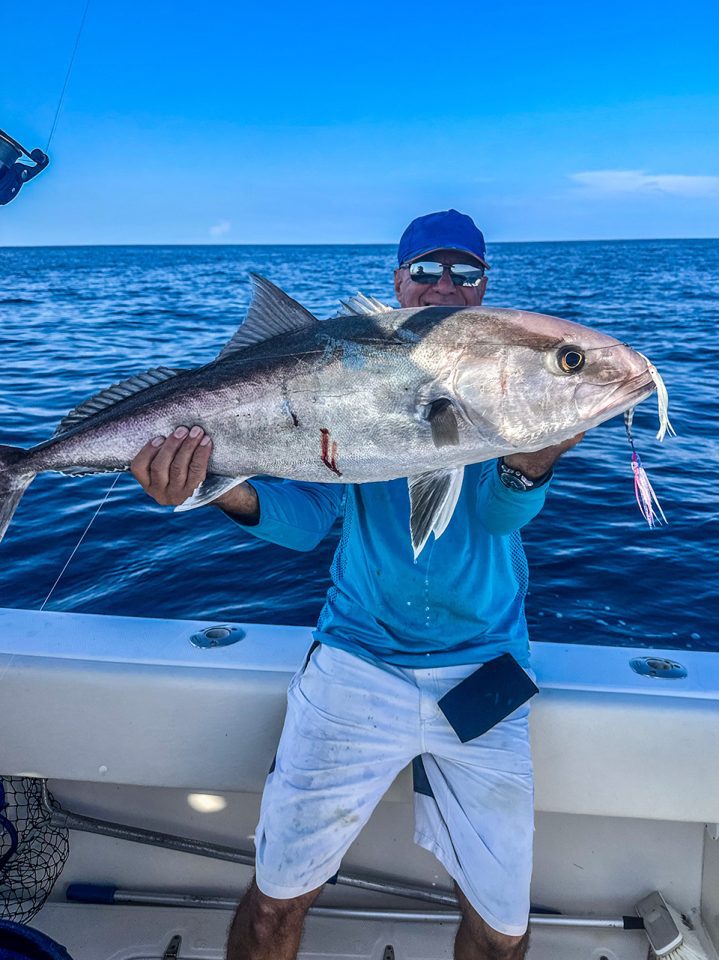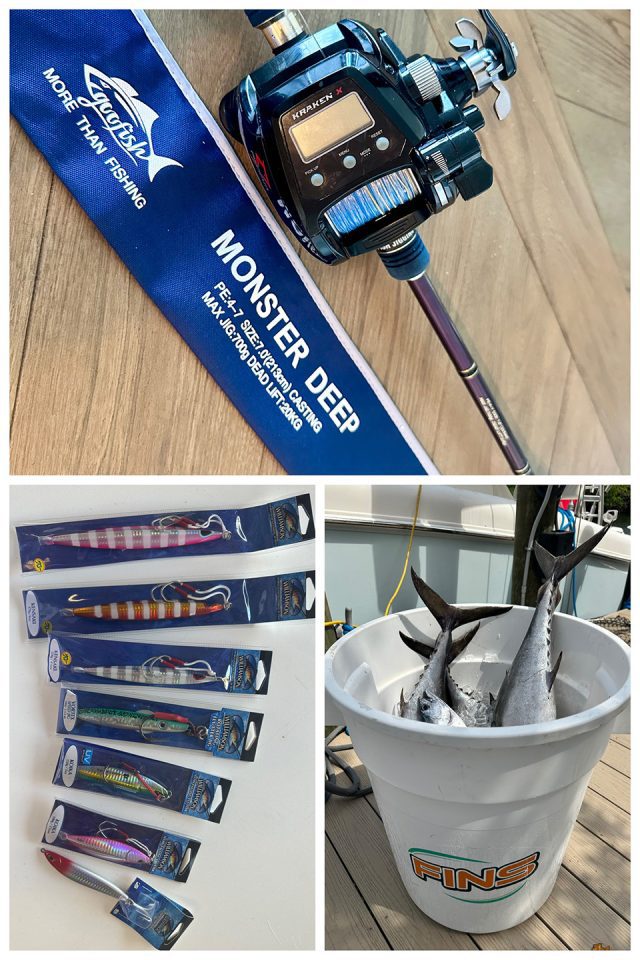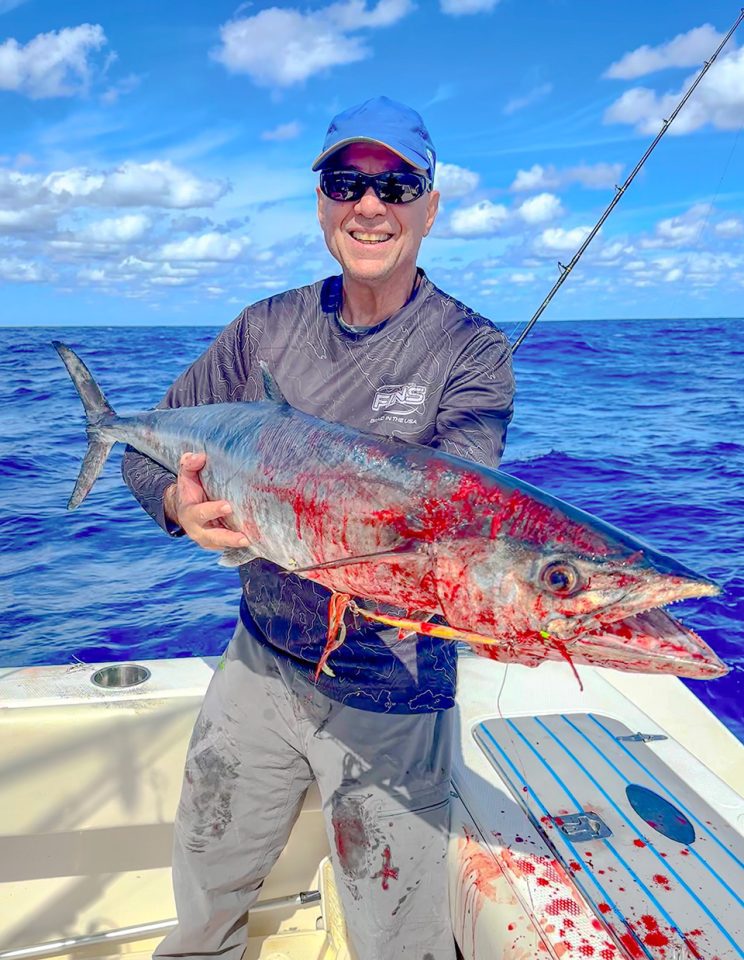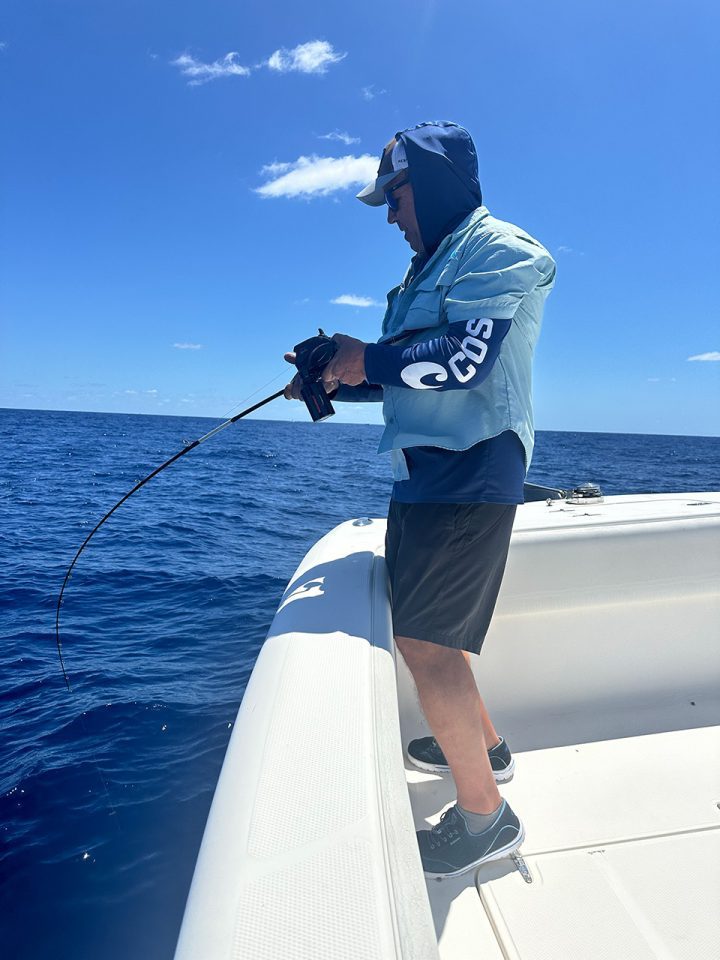By Mark Ambert
The electric reel is a game changer for high-speed jigging. Electric provides some distinct advantages in comparison to hours spent manually cranking jigs at high speed through the water column.
With this style of jigging, I’m talking about working heavy jigs for big fish on deep structure. The key to catching fish is finding areas that consistently hold bait. Look for reefs, hills, and larger wrecks in deep water that hold baitfish. This is where you’ll find feeding fish.
Check your sonar screen frequently and look for “scratches” or fish feeding in the water column. We usually assign one person to call out depth changes along with depth of marked fish. Tuna can be found from 250 feet up to the surface. High-speed cruisers like wahoo and kingfish prefer the upper 50 feet of water, while amberjack will be close to structure. Jigging and adjusting depth to target fish is more efficient under electric power, and the most difficult part of the electric game is picking the right equipment that works together.
The Gear
Simplicity along with reasonable size and weight are key considerations for long days targeting big game fish. I landed on the Piscifun Kraken X electric reel, and it has become indispensable in my arsenal.
The Kraken is moderately priced and uses the same proven Japanese motor technology as many of its competitors. The 33 pounds of max-drag were put to the test unexpectedly in my first trip during battle with the ultimate slugger—a 40-pound-class amberjack. They’re not called “reef donkeys” for nothing! This reel made short work of that AJ without heating up or momentarily shutting down, which is a common issue for over-taxed electric reels. I fish a left-handed model when high-speed jigging, and the Piscifun PB5000 battery pack provides all-day power and complete mobility around the boat.
The Kraken mates perfectly with the Goofish Monster Deep PE4-7. It’s a 7-foot rod that handles a maximum jig weight of 700g. It can deadlift 44 pounds, and has held up to some significant adversaries without being too heavy.
I spool all my reels with FINS braid. I use the 45/6, which has 45-lb. breaking strength and the diameter of 6-lb. monofilament. This matches the reel specifications while adding line capacity. The thin diameter also cuts through the water with little resistance, which is critical for vertical jigging.
On the business end, I use jigs in the 180-to-320g range but can go as heavy as 700g if needed to reach bottom. I use a 50-lb. wind-on leader from Suffix. My go-to jigs are from Williamson, under the Rapala family of lures. Rapala also owns VMC, so these lures are equipped with high-quality hardware. I use Koika, Kensaki, Vortex, Abyss and Benthos jigs.
With these in your arsenal, you can cover any situation and depth. Make sure to purchase glow-in-the-dark options along with high visibility and natural colors. Purchase your favorites in multiple size ranges from light to heavy, and you’re set!
The Technique
With an electric reel, you can easily alternate jigging retrieves from a slow yo-yo motion, which mimics a wounded baitfish, to a full-on high-speed assault, which triggers the bite reflex. Experiment with different techniques and settle on the one that works best on any given day.
Make sure the drag is set like any other star drag reel with the ability to pay out line when a big fish slams your offering. Once hooked up, use the electric motor to apply constant pressure. I find this is more effective for wearing a fish down than manually pumping the rod while reeling.
Most of all, experiment with your new rig. It will open a world of new options and make your days much more enjoyable. I alternate between the powered setup and a quality spinning rod setup specifically for jigging.
I personally have over 400 hours of hardcore jigging on this combination without a single point of failure. Now get one on the water and enjoy your new-found passion!
Mark Ambert, IG @marksgonefishing_




